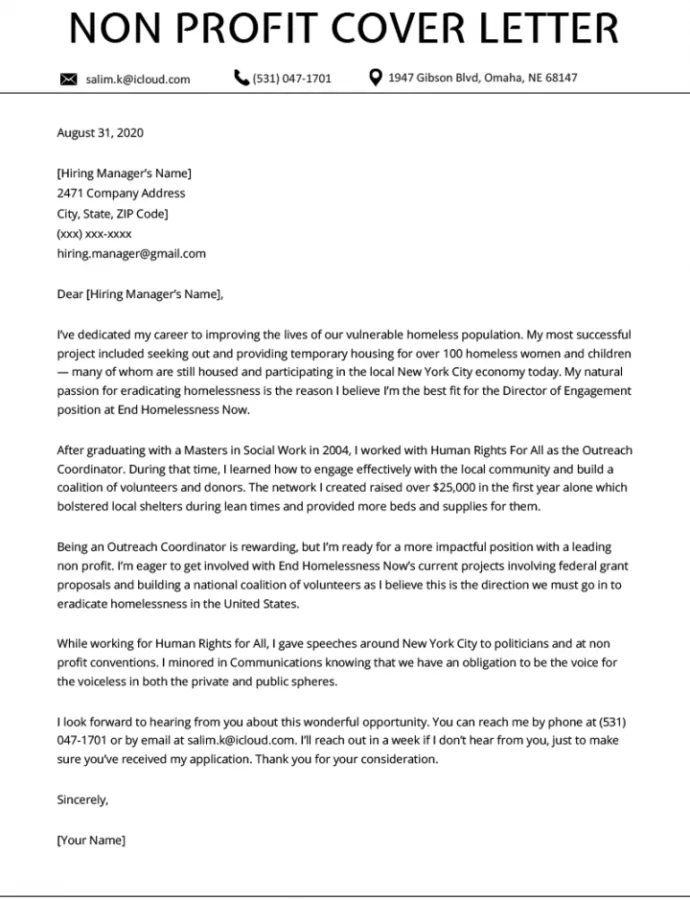Understanding the Importance of a Fundraising Cover Letter
A fundraising cover letter is far more than just a formality; it’s your primary opportunity to connect with potential donors on an emotional level, articulate your organization’s mission, and make a persuasive case for support. In a world saturated with requests, a well-crafted cover letter is what sets you apart, grabbing the reader’s attention and inspiring them to contribute to your cause. It serves as a personal introduction, a concise summary of your work, and a compelling invitation to become a partner in your mission. Without a strong cover letter, your fundraising efforts might fall flat, leaving potential donors unaware of the crucial impact their contribution could have.
Key Components of a Compelling Cover Letter
A successful fundraising cover letter is built on several critical components, each playing a vital role in persuading the reader. These elements work together to create a cohesive narrative, drawing the donor in and inspiring them to act. Think of it as a carefully constructed argument, where each point builds upon the last, leading to a clear call to action. Neglecting any of these key aspects can weaken your letter’s impact and diminish your chances of securing donations. Therefore, it’s essential to pay close attention to each element, ensuring it’s crafted with precision and purpose.
Crafting a Powerful Opening
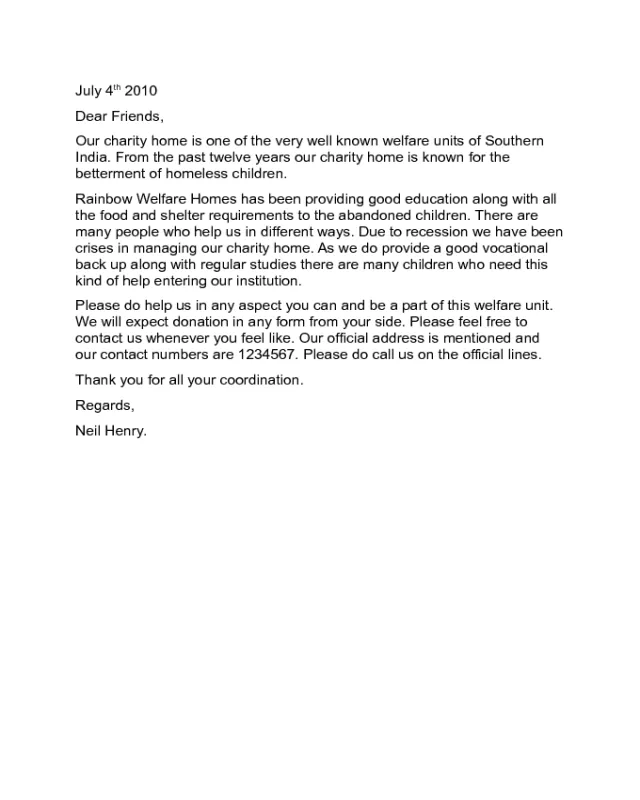
Your opening paragraph is your first – and often only – chance to grab the reader’s attention. Start with a compelling hook that immediately resonates with the donor and captures their interest. This could be a powerful anecdote, a startling statistic, or a direct reference to the donor’s past contributions. The goal is to immediately connect with the reader on an emotional level, making them want to learn more. Avoid generic greetings or overly formal language; instead, strive for a tone that is both professional and personable. The opening sets the stage, and it must be both captivating and relevant to your cause.
Highlighting Your Organization’s Mission and Impact
Clearly and concisely articulate your organization’s mission and the positive impact it has on the community or the cause you support. Use specific examples and stories to illustrate your work and the difference you make. Instead of simply stating your mission, show it through impactful narratives. Share stories of individuals, communities, or causes that have benefited from your organization’s programs. Quantify your impact whenever possible – provide statistics that demonstrate the reach and effectiveness of your programs. This section provides the donor with a clear understanding of where their money will go and the tangible good it will accomplish. (See image: nonprofit-mission.webp)
Showcasing Your Past Fundraising Successes
Demonstrate your organization’s track record of successfully raising and utilizing funds. Briefly outline past fundraising campaigns and the results achieved. This demonstrates your ability to manage funds effectively and achieve your goals, building trust and confidence with potential donors. Providing quantifiable data on past successes – such as the amount raised, the number of beneficiaries served, or the specific outcomes achieved – strengthens your credibility. Emphasize how these past successes have contributed to your overall mission and set the stage for future endeavors. (See image: fundraising-success.webp)
Clearly Stating Your Fundraising Goal
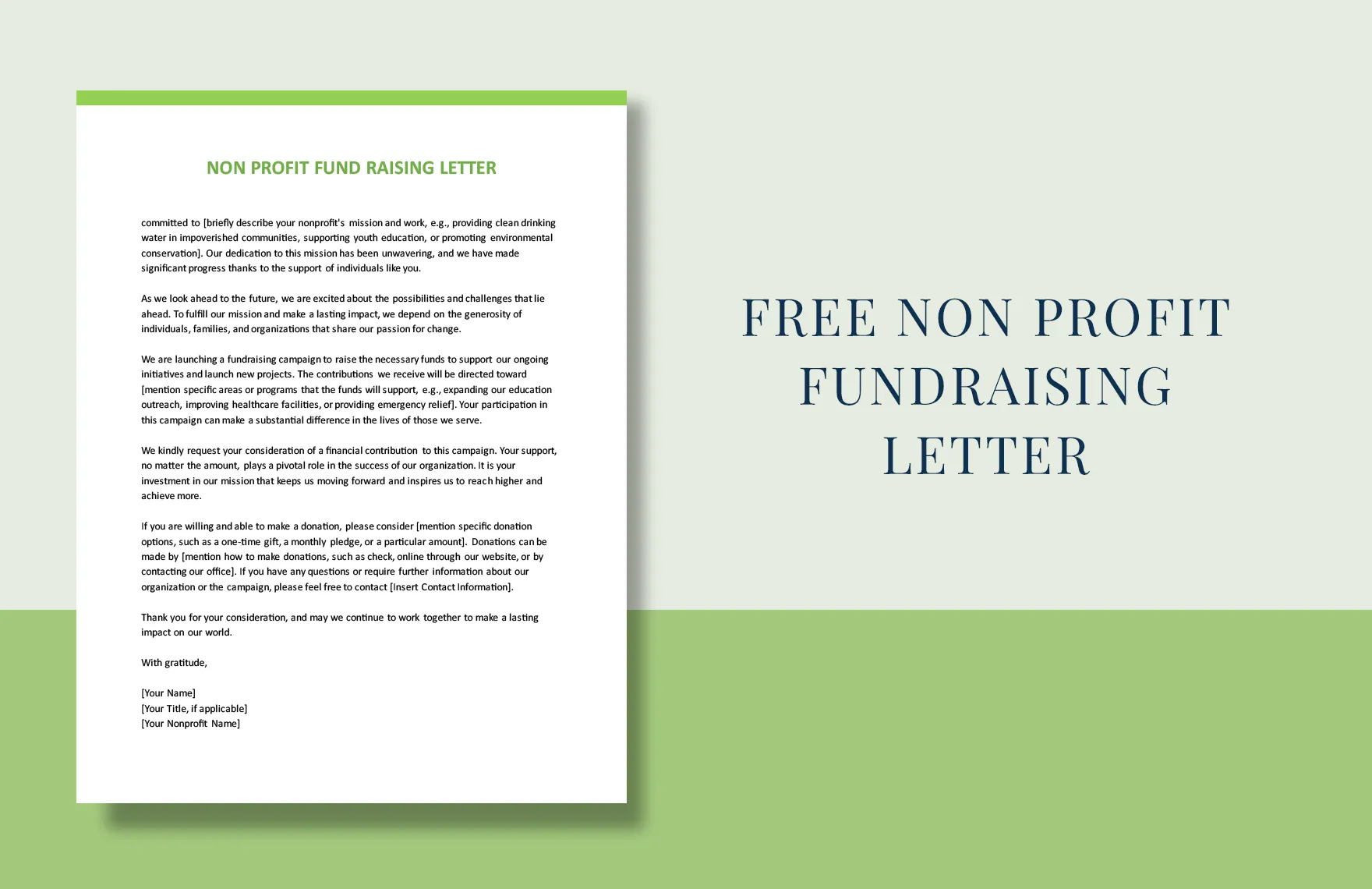
Be explicit about your current fundraising goal and how the funds will be used. This demonstrates transparency and helps donors understand the specific purpose of their contribution. Specify the amount of money you need to raise and what it will be used for – whether it’s funding a particular program, expanding your services, or addressing an urgent need. Breaking down the goal into smaller, more manageable objectives can also be effective. For instance, you might state that $50 will provide a meal for a child, or $100 will cover the cost of a specific resource. Make the purpose of the donation very clear to ensure that donors feel confident about how their donation will make a difference. (See image: fundraising-goals.webp)
Making a Specific and Engaging Ask
Don’t shy away from making a direct and specific ask. Provide clear options for giving, whether it’s a suggested donation amount or a link to your online donation portal. Make it easy for donors to contribute and ensure they understand how their generosity will be utilized. Provide a call to action that is clear and actionable, guiding the donor on the next steps. Include specific donation amounts with a description of what that amount can achieve. If you have an online giving platform, provide the link in multiple places in the letter to maximize accessibility. Also, provide contact information for further questions.
Emphasizing the Benefits of Giving
Focus on the positive impact the donor’s contribution will have on the beneficiaries and the community. Explain the difference their gift will make and the lasting benefits it will create. Connect the donor’s contribution to the greater good, demonstrating how their generosity can change lives. The benefit-driven approach is crucial for inspiring donors to give. Highlight not just the programs and services that the donations will support, but the impact the programs have on the people they serve. For example, if the donation supports educational programs, speak about the future opportunities the beneficiaries will receive. (See image: donation-impact.webp)
Crafting a Strong Closing
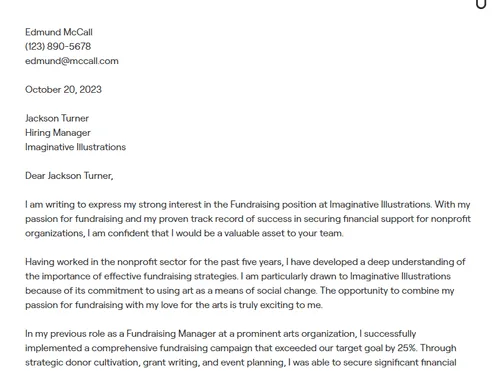
End your cover letter with a strong, appreciative closing that expresses your gratitude and reinforces the call to action. Reiterate your commitment to the cause and offer additional ways the donor can get involved. Thank the reader for their time and consideration, expressing genuine appreciation for their support. Provide contact information and invite them to learn more about your organization. Reiterate the importance of their support. The goal is to leave the reader feeling inspired and eager to make a difference.
Formatting and Design Tips
The visual presentation of your cover letter is just as important as its content. Ensure your letter is easy to read and visually appealing. A well-formatted letter demonstrates professionalism and attention to detail. Poor formatting can create a negative first impression, even if the content is strong. Therefore, it’s essential to pay attention to the visual elements of your letter, creating a positive and engaging experience for the reader. (See image: cover-letter-formatting.webp)
Choosing the Right Tone
The tone of your cover letter should be professional, yet personable and empathetic. Avoid sounding too formal or overly promotional. Strive for a voice that is authentic and genuine, reflecting your passion for the cause. The appropriate tone will resonate with the donor, creating an emotional connection that inspires them to give. Consider your audience and tailor your tone accordingly. A younger donor might appreciate a slightly more casual approach, while an older donor might respond better to a more traditional tone. The goal is to find the right balance between professionalism and personality.
Formatting Your Letter for Readability
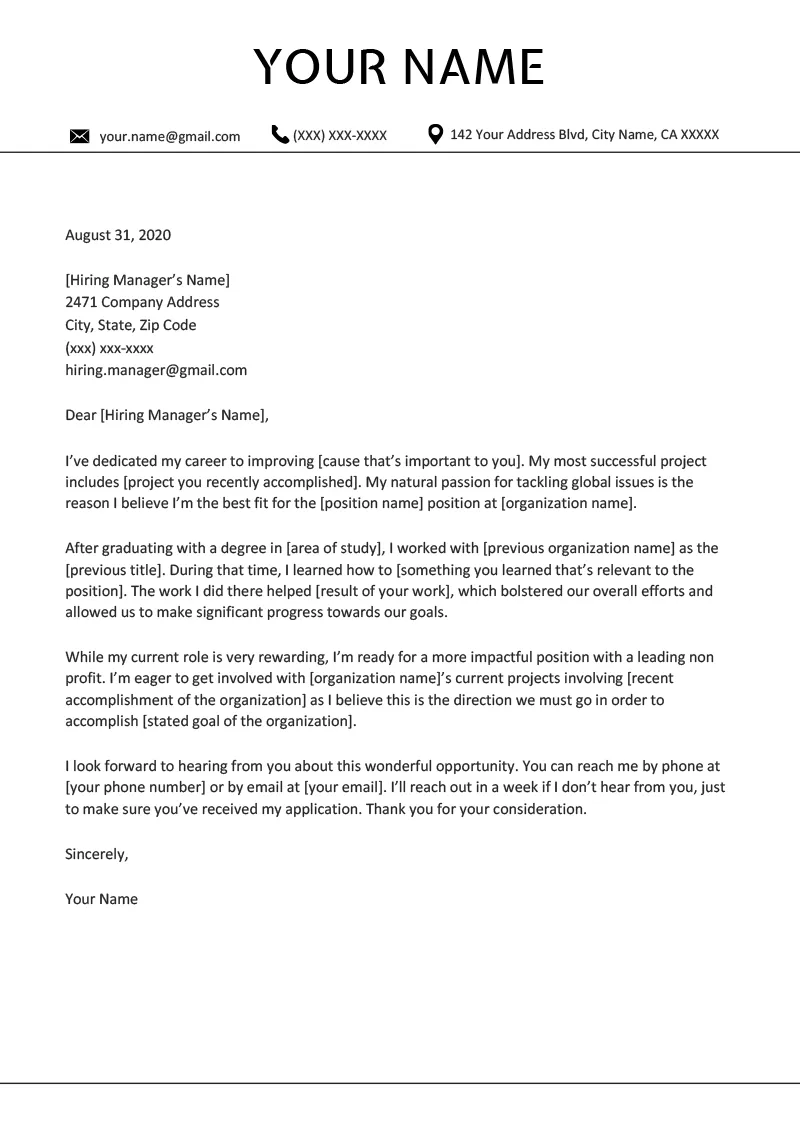
Use a clear, easy-to-read font, such as Arial or Times New Roman, and a font size between 11 and 12 points. Employ ample white space to make the text less dense and more inviting. Break up large blocks of text with bullet points, headings, and subheadings to make the information more accessible. Keep paragraphs concise and to the point, avoiding overly long sentences. Consistent formatting throughout the letter helps guide the reader through the information, making it easier to digest and understand. Avoid overly complex layouts or decorative elements that could distract from the content.
Proofreading and Editing
Thoroughly proofread and edit your cover letter to eliminate any grammatical errors, typos, or inconsistencies. Errors undermine your credibility and can create a negative impression. Always have someone else review your letter before sending it out. A fresh pair of eyes can often catch errors that you might miss. Pay attention to the details, such as the spelling of names and the accuracy of contact information. A polished letter shows that you value the reader’s time and are committed to excellence.
Personalizing Your Cover Letter
Personalization is key to making your cover letter stand out. Generic, mass-produced letters rarely have the same impact as those tailored to the individual recipient. Personalization shows you’ve taken the time to understand the donor and their potential interests, creating a deeper connection. A personalized letter feels less like a solicitation and more like a personal invitation to join your mission. Therefore, taking the time to personalize your cover letter can significantly increase your chances of securing a donation.
Researching Potential Donors
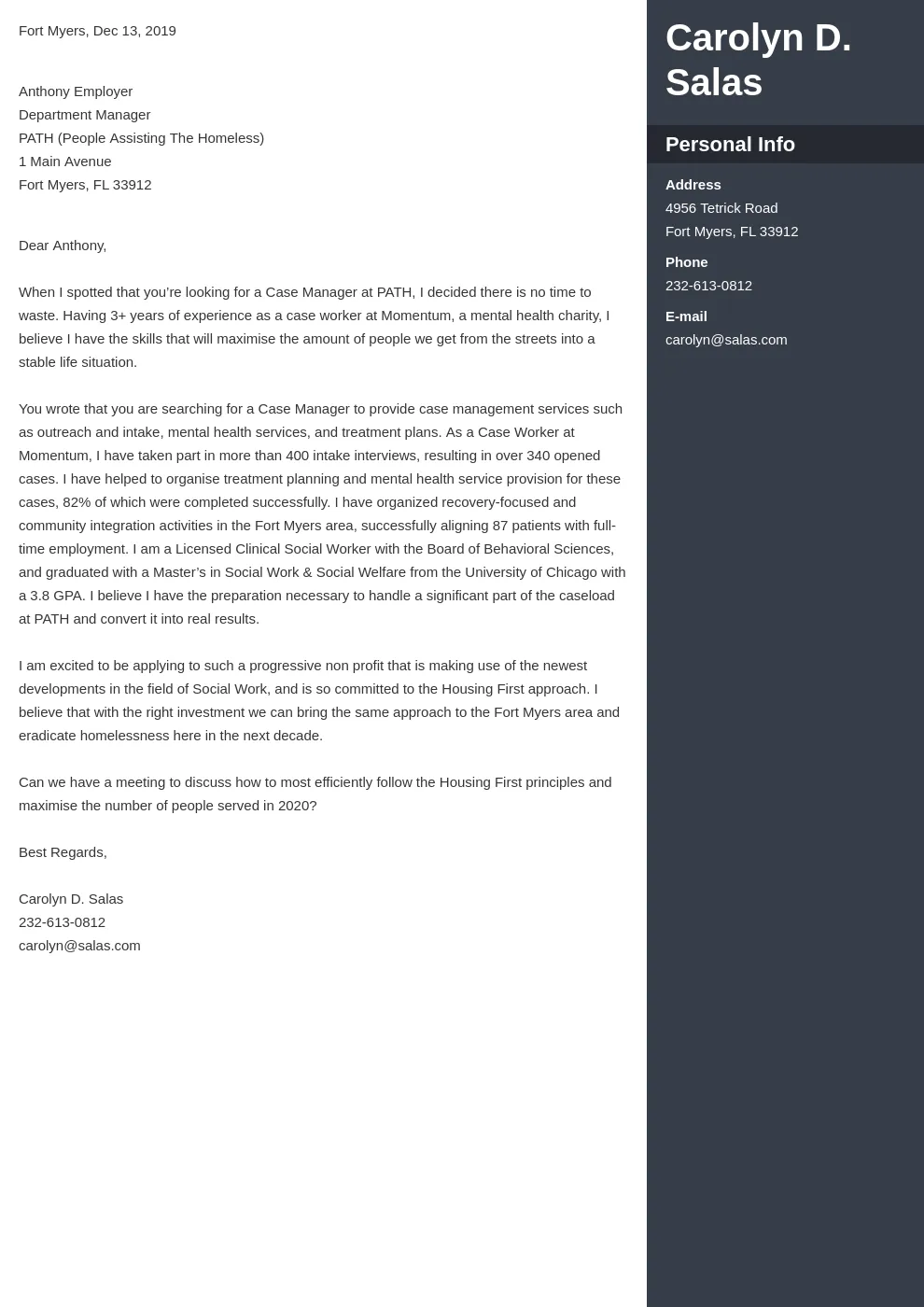
Before sending a cover letter, research your potential donors to learn about their interests, giving history, and any connection they might have to your organization or cause. Online research, such as reviewing their social media profiles or looking them up in databases, can provide valuable insights. Understanding the donor’s background allows you to tailor your letter to their specific interests and preferences, increasing the likelihood that they will be receptive to your request. This also shows that you value their individual support. (See image: donor-research.webp)
Tailoring Your Letter to Each Donor
Use the information you gather to tailor your letter to each donor. Mention their past contributions, shared connections, or interests, showing that you understand and appreciate their individual support. Highlight how their specific interests align with your organization’s work. Tailoring the content ensures that the donor feels personally connected to your cause and is more likely to donate. Even small touches, such as mentioning a shared connection or a past donation, can make a big difference.
Following Up After Sending Your Letter
Following up is an essential step in the fundraising process. It shows that you value the donor’s consideration and are committed to building a lasting relationship. A well-executed follow-up can significantly increase your chances of securing a donation. This follow-up will reinforce your initial message and provide an opportunity to answer any questions the donor may have. It also demonstrates your commitment to the cause.
Tracking Your Results
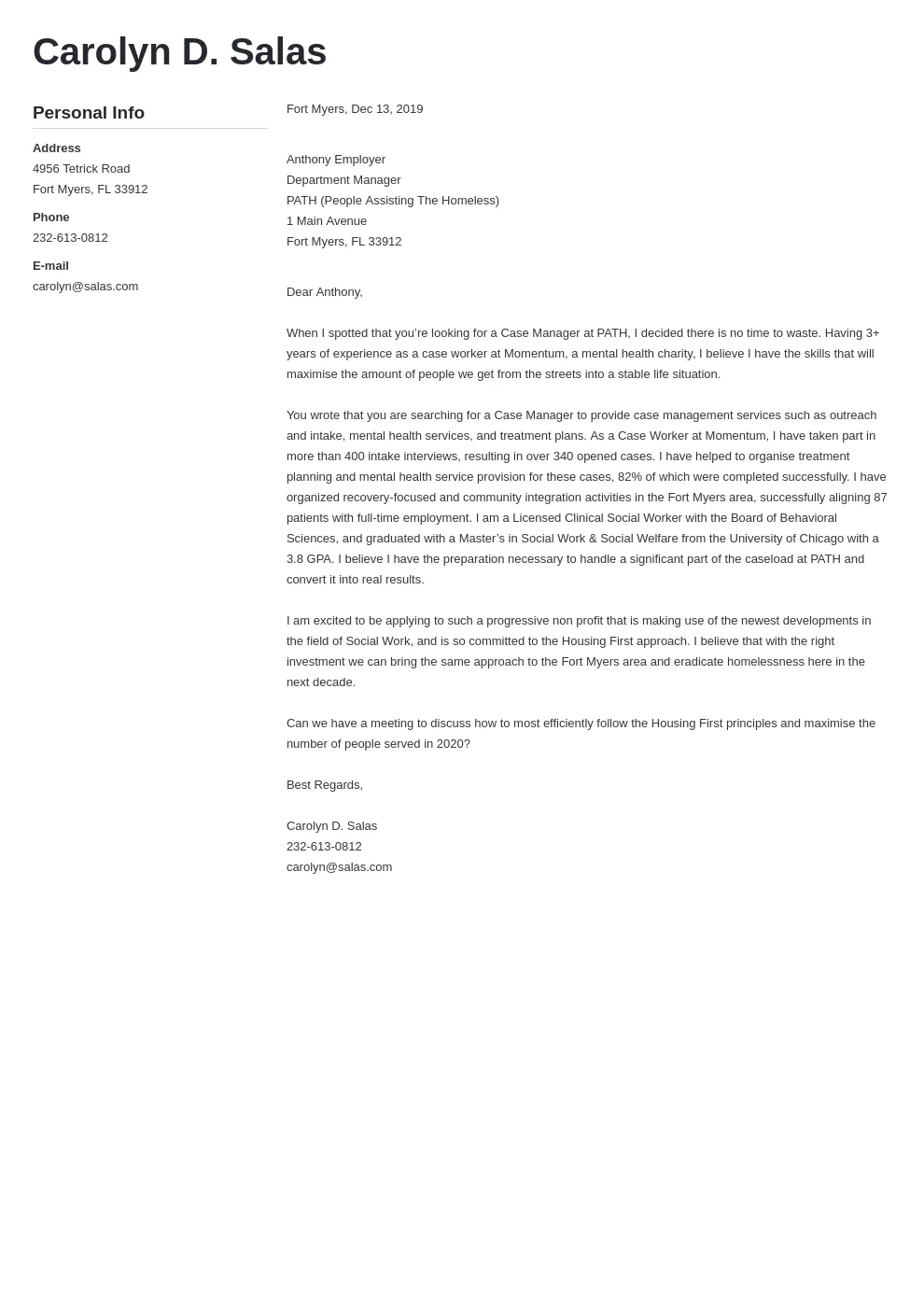
Implement a system for tracking your fundraising efforts, including the dates your letters were sent, the donors contacted, and the responses received. Tracking your results helps you assess the effectiveness of your cover letters and identify areas for improvement. Use a spreadsheet, database, or dedicated fundraising software to organize your data. Analyze the data to identify patterns and trends in your fundraising efforts. This data provides valuable insights that allow you to refine your strategy and maximize your impact. You will be able to improve on your next fundraising initiative.
Sending a Thank You Note
Always send a thank-you note to every donor, regardless of the donation amount. Express your gratitude for their support and acknowledge the impact of their contribution. Acknowledge receipt of the donation as soon as possible. Personalize each thank you note. A handwritten note or personalized email shows that you genuinely appreciate the donor’s generosity. It also reinforces their connection to your cause and encourages future giving. Include details about how their gift will be used, further reinforcing the positive impact. (See image: thank-you-note.webp)
Cover Letter Examples
Consider looking for cover letter samples to gain inspiration and guidance. Review examples from reputable organizations that share your mission and cause, and tailor them to fit your individual needs. This will give you a starting point to create your own cover letter. Analyze these cover letters to gain insights into effective writing techniques. Remember to always personalize the examples to fit your organization’s unique mission, programs, and goals. Remember to never copy directly from examples, but use them to shape your letter and make it your own. (See image: cover-letter-example.webp)
